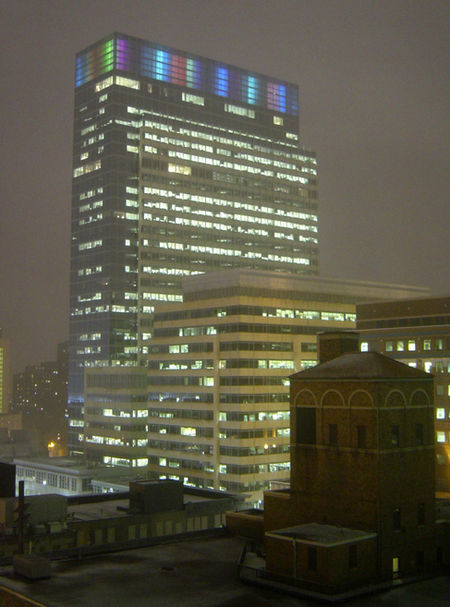Target Plaza South
2001 establishments in MinnesotaMinnesota building and structure stubsOffice buildings completed in 2001Retail company headquarters in the United StatesSkyscraper office buildings in Minneapolis ... and 1 more
Target Corporation

Target Plaza South is a 33-story skyscraper in downtown Minneapolis, Minnesota completed in 2001. The building serves as the corporate headquarters for Target Corporation. It is located a few blocks away from the original building which the Target Corporation's predecessor, Dayton's, was located in from 1902 until 2001.
Excerpt from the Wikipedia article Target Plaza South (License: CC BY-SA 3.0, Authors, Images).Target Plaza South
Nicollet Mall, Minneapolis
Geographical coordinates (GPS) Address Nearby Places Show on map
Geographical coordinates (GPS)
| Latitude | Longitude |
|---|---|
| N 44.973611111111 ° | E -93.276111111111 ° |
Address
Nicollet Mall 1000
55402 Minneapolis
Minnesota, United States
Open on Google Maps








